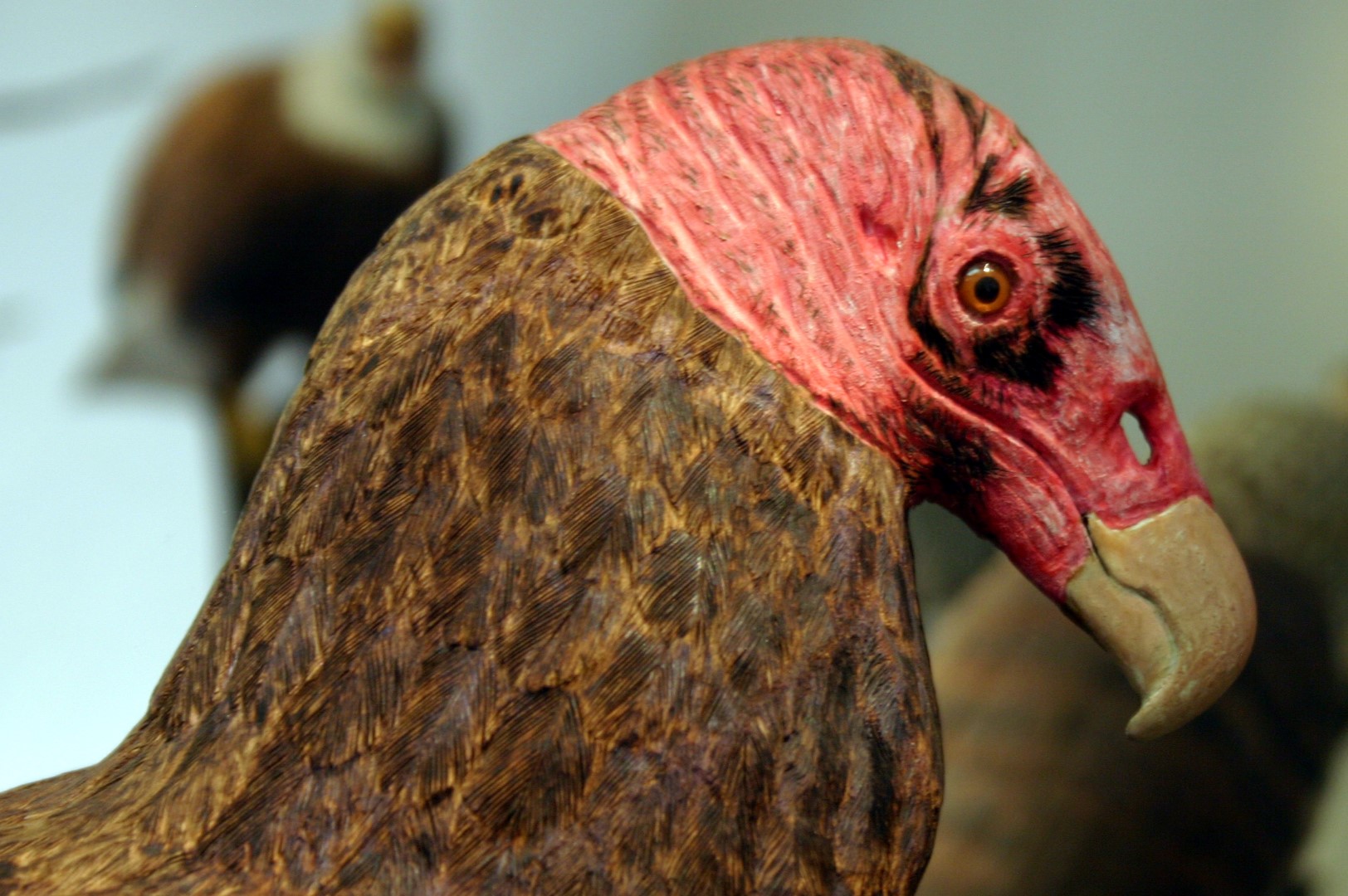Vultures are an ecologically vital group of birds that face a range of threats in many areas that they occur. Populations of many species are under pressure and some species are facing extinction. Learn what you can do to protect vultures…and why that’s a really good idea!
Stop by the Museum (we’re open 10am – 4pm) to discover how many vulture species live in Vermont (and where). Can you find all of our vulture carvings? Are we missing any? Check out one of our larger carvings and imagine where would we have had to put it if Bob Spear had carved it with its wings outspread.
Not in Vermont? Drop by the Vulture Day website at https://www.VultureDay.org to stretch your curiosity with resources , games, education activities, and more. Celebrate IVAD locally!
Celebrate Vultures all around the world!
The first Saturday in September each year is International Vulture Awareness Day. But we can learn about and honor them more often than that!

The first Saturday in September each year is International Vulture Awareness Day.
Vultures are an ecologically vital group of birds that face a range of threats in many areas that they occur. Populations of many species are under pressure and some species are facing extinction. Learn what you can do to protect vultures…and why that’s a really good idea!
Stop by the Museum (we’re open 10am – 4pm) to discover how many vulture species live in Vermont (and where). Can you find all of our vulture carvings? Are we missing any? Check out one of our larger carvings and imagine where would we have had to put it if Bob Spear had carved it with its wings outspread.
Not in Vermont? Drop by the Vulture Day website at https://www.VultureDay.org to stretch your curiosity with resources , games, education activities, and more. Celebrate IVAD locally!
Celebrate Vultures all around the world!

The first Saturday in September each year is International Vulture Awareness Day.
Vultures are an ecologically vital group of birds that face a range of threats in many areas that they occur. Populations of many species are under pressure and some species are facing extinction. Learn what you can do to protect vultures…and why that’s a really good idea!
Stop by the Museum (we’re open 10am – 4pm) to discover how many vulture species live in Vermont (and where). Can you find all of our vulture carvings? Are we missing any? Check out one of our larger carvings and imagine where would we have had to put it if Bob Spear had carved it with its wings outspread.
Not in Vermont? Drop by the Vulture Day website at https://www.VultureDay.org to stretch your curiosity with resources , games, education activities, and more. Celebrate IVAD locally!
Celebrate Vultures all around the world!




